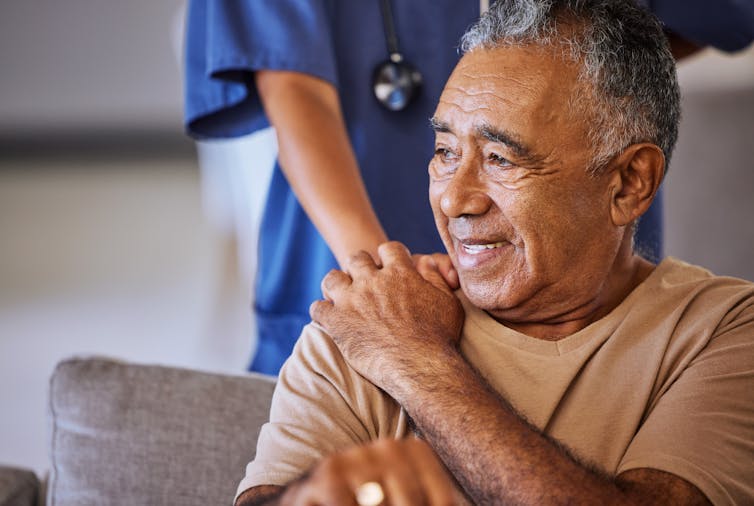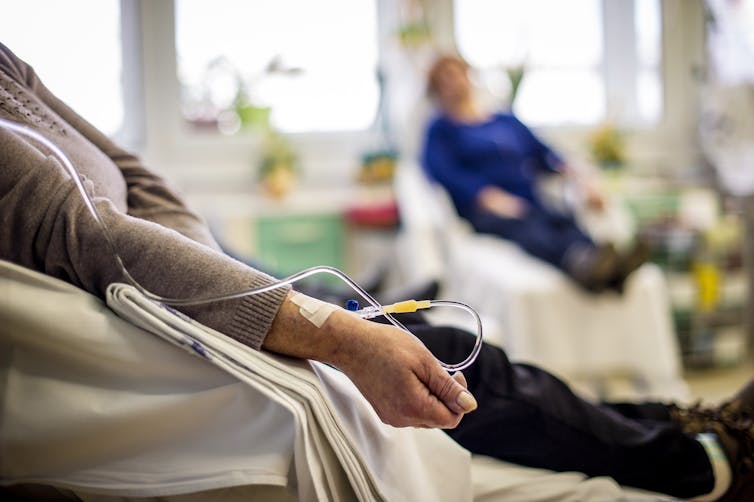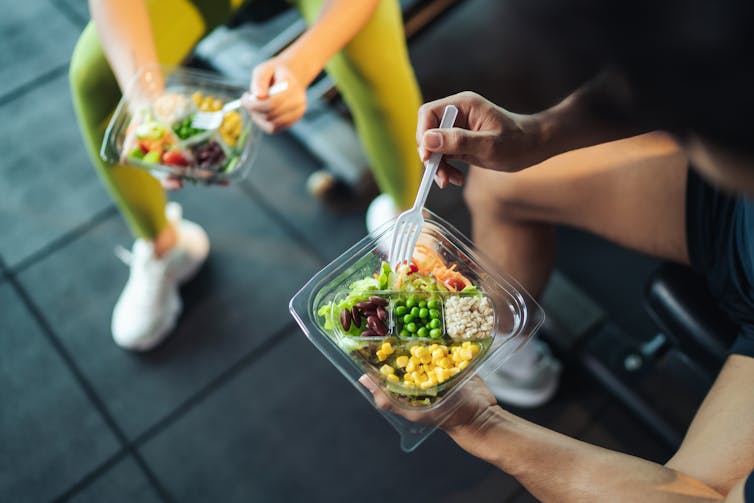Wednesday, 29 May 2024
Wednesday, 22 May 2024
The value of supportive care oncology for cancer
Exercise, therapy and diet can all improve life during cancer treatment and boost survival. Here’s how

With so many high-profile people diagnosed with cancer we are confronted with the stark reality the disease can strike any of us at any time. There are also reports certain cancers are increasing among younger people in their 30s and 40s.
On the positive side, medical treatments for cancer are advancing very rapidly. Survival rates are improving greatly and some cancers are now being managed more as long-term chronic diseases rather than illnesses that will rapidly claim a patient’s life.
The mainstays of cancer treatment remain surgery, chemotherapy, radiation therapy, immunotherapy, targeted therapy and hormone therapy. But there are other treatments and strategies – “adjunct” or supportive cancer care – that can have a powerful impact on a patient’s quality of life, survival and experience during cancer treatment.
Keep moving if you can
Physical exercise is now recognised as a medicine. It can be tailored to the patient and their health issues to stimulate the body and build an internal environment where cancer is less likely to flourish. It does this in a number of ways.
Exercise provides a strong stimulus to our immune system, increasing the number of cancer-fighting immune cells in our blood circulation and infusing these into the tumour tissue to identify and kill cancer cells.
Our skeletal muscles (those attached to bone for movement) release signalling molecules called myokines. The larger the muscle mass, the more myokines are released – even when a person is at rest. However, during and immediately after bouts of exercise, a further surge of myokines is secreted into the bloodstream. Myokines attach to immune cells, stimulating them to be better “hunter-killers”. Myokines also signal directly to cancer cells slowing their growth and causing cell death.
Exercise can also greatly reduce the side effects of cancer treatment such as fatigue, muscle and bone loss, and fat gain. And it reduces the risk of developing other chronic diseases such as heart disease and type 2 diabetes. Exercise can maintain or improve quality of life and mental health for patients with cancer.
Emerging research evidence indicates exercise might increase the effectiveness of mainstream treatments such as chemotherapy and radiation therapy. Exercise is certainly essential for preparing the patient for any surgery to increase cardio-respiratory fitness, reduce systemic inflammation, and increase muscle mass, strength and physical function, and then rehabilitating them after surgery.
These mechanisms explain why cancer patients who are physically active have much better survival outcomes with the relative risk of death from cancer reduced by as much as 40–50%.
Mental health helps
The second “tool” which has a major role in cancer management is psycho-oncology. It involves the psychological, social, behavioural and emotional aspects of cancer for not only the patient but also their carers and family. The aim is to maintain or improve quality of life and mental health aspects such as emotional distress, anxiety, depression, sexual health, coping strategies, personal identity and relationships.
Supporting quality of life and happiness is important on their own, but these barometers can also impact a patient’s physical health, response to exercise medicine, resilience to disease and to treatments.
If a patient is highly distressed or anxious, their body can enter a flight or fight response. This creates an internal environment that is actually supportive of cancer progression through hormonal and inflammatory mechanisms. So it’s essential their mental health is supported.

Putting the good things in: diet
A third therapy in the supportive cancer care toolbox is diet. A healthy diet can support the body to fight cancer and help it tolerate and recover from medical or surgical treatments.
Inflammation provides a more fertile environment for cancer cells. If a patient is overweight with excessive fat tissue then a diet to reduce fat which is also anti-inflammatory can be very helpful. This generally means avoiding processed foods and eating predominantly fresh food, locally sourced and mostly plant based.

Muscle loss is a side effect of all cancer treatments. Resistance training exercise can help but people may need protein supplements or diet changes to make sure they get enough protein to build muscle. Older age and cancer treatments may reduce both the intake of protein and compromise absorption so supplementation may be indicated.
Depending on the cancer and treatment, some patients may require highly specialised diet therapy. Some cancers such as pancreatic, stomach, esophageal, and lung cancer can cause rapid and uncontrolled drops in body weight. This is called cachexia and needs careful management.
Other cancers and treatments such as hormone therapy can cause rapid weight gain. This also needs careful monitoring and guidance so that, when a patient is clear of cancer, they are not left with higher risks of other health problems such as cardiovascular disease and metabolic syndrome (a cluster of conditions that boost your risk of heart disease, stroke and type 2 diabetes).
Working as a team
These are three of the most powerful tools in the supportive care toolbox for people with cancer. None of them are “cures” for cancer, alone or together. But they can work in tandem with medical treatments to greatly improve outcomes for patients.
If you or someone you care about has cancer, national and state cancer councils and cancer-specific organisations can provide support.
For exercise medicine support it is best to consult with an accredited exercise physiologist, for diet therapy an accredited practising dietitian and mental health support with a registered psychologist. Some of these services are supported through Medicare on referral from a general practitioner.
For free and confidential cancer support call the Cancer Council on 13 11 20.![]()
Rob Newton, Professor of Exercise Medicine, Edith Cowan University
This article is republished from The Conversation under a Creative Commons license. Read the original article.
Sunday, 19 May 2024
Artificial Intelligence - the potential threat is wildly underestimated
 |
| Shutterstock |
As artificial intelligence (AI) is now being rolled out across multiple platforms and usages, the warning from key people in the industry should take on a stronger emphasis. In May 2023, hundreds of industry leaders from Open AI, GoogleDeepMind, Anthropic and other key technology companies issued a stark warning on the risks of AI and the need for a pause in AI deployment, new laws and Government regulatory oversight.
- smart assistants
- automated self driving vehicles
- virtual travel assistants
- marketing chatbots
- manufacturing robots
- healthcare management
- automated financial investing
- misuse of AI by criminal groups (which already occurs in part)
- using AI as a weapon by state actors for the furtherance of strategic or tactical gain
- machine learning growing exponentially such that the programmers and code writers no longer are able to understand what is being produced
- machine to machine learning whereby the links between software produces inherent errors or unforseen negative effects
- high speed decision making by AI which are difficult for humans to prevent or rectify.
 |
| Shutterstock - AI generated |
The first example, is a Major-General in the British Army circa early 20th century being a historical photograph. The second example is printed below and serves as a complete contrast, being a young woman in evening dress with a shawl. There are technical errors contained in these images however much more sophisticated versions are possible from more complex AI systems. It is easy to see how deep image fakes of known public figures can be produced with minimal effort.
 |
| Shutterstock - AI generated |
Friday, 10 May 2024
PFAS - the forever global contamination
 |
| Shutterstock |
- Water and stain protection for carpets, fabric, furniture and apparel
- Paper coating (including a range of food packaging)
- Metal plating
- Photographic materials
- Aviation hydraulic fluid
- Cosmetics and sunscreen
- Medical devices
- Ingredients in fire-fighting foam (a particular substance of impact in Australia)
For further information click here: Australian Government PFAS website

